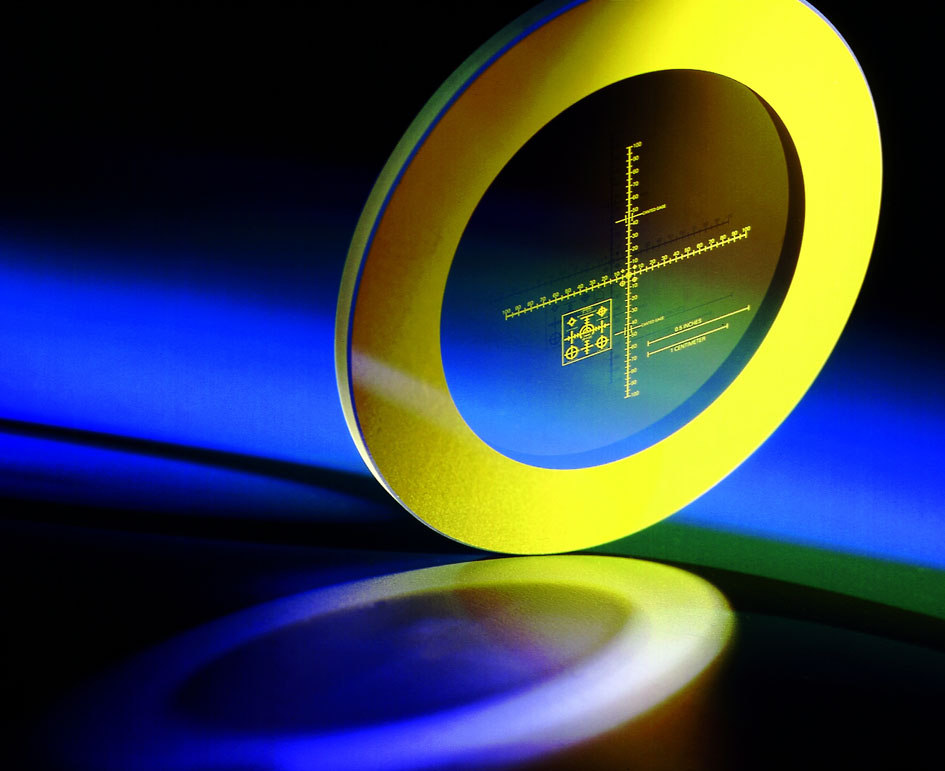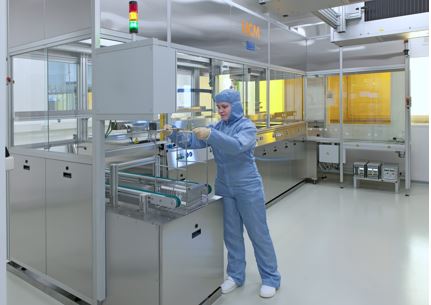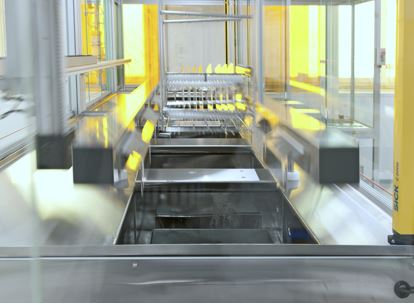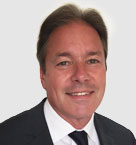Precision Optics
Highly versatile ultrasonic system for dependable final cleaning of microstructures
No particle larger than 1 µm
Technological advances in the field of microstructures and the need to process larger substrates called for the installation of a new final cleaning system at POG Präzisionsoptik Gera. The equipment solution proposed by UCM AG won the customer's approval. It makes it possible to clean both untreated wafers as well as structured and coated substrates. The cleanliness specification stipulating "no particle larger than 1 µm" is reliably fulfilled.
When the Zeiss Works in Gera/Germany were closed down in 1991, a group of former high-level executives led a management buyout to preserve and develop the long tradition of optical manufacturing at Gera, thus marking the birth of POG Präzisionsoptik Gera GmbH. Today, the company has 140 employees. It develops and produces, on the one hand, custom optical precision parts, components and devices for the entire optical range of the spectrum. These items are used by customers all over the world in the fields of mechanical engineering, measuring technology, industrial image processing, medical equipment, laser technology, and the semiconductors and aerospace industries. On the other hand, the company has gained international renown as a manufacturer of both standardized and custom optical microstructures, e.g., net grid and scale graticules, USAF resolution targets, pinhole apertures and calibration targets. In this segment, POG can handle all development and production process in-house. "We recently expanded our fabrication of microstructures in terms of both the range of technological options and the size of substrates we are capable of handling. Consequently, a new final cleaning system was needed", reports Jan Schubach, one of POG's managing directors.
Maximum cleanliness is required
POG's optical microstructures are made chiefly from B 270 glass and quartz glass, as well as from ceramic and glass-ceramic substrates. A final cleaning step designed to remove dust, ultra-fine residue of polishing products and fingerprints is mandatory both with untreated substrates and after adding the structure and coating. Since the structures applied to the substrates measure only 2 µm in some cases, the cleanliness specification requires that no particle should be larger than 1 µm. POG developed a solution for these very exacting cleaning tasks jointly with an external consultant while discussing its technology with various equipment makers.
One versatile cleaning system instead of multiple special types
„We were looking at different cleaning concepts for special uses such as cleaning masks or a specific substrate configuration for the semiconductor industry. In all likelihood, we would have needed three different systems to meet our needs. This prompted us to get in touch with UCM. We already possessed one cleaning system from this equipment maker, and our consultant, too, had gathered good experience with the company in another project", Jan Schubach explains. Swiss UCM AG, a member of the Ecoclean Group, revised and adapted the equipment concept together with POG and the consultant. "UCM addressed our proposals very flexibly, drawing on their own extensive experience in the manufacture of cleaning systems for optical products", the managing director remembers.
The new ultrasonic cleaning line comprises a total of eleven stations, including seven immersion tanks. These are designed for the following process steps: wet loading, cleaning with multi-frequency ultrasound (40 and 80 kHz), megasonic cleaning, rinsing, fine-rinsing, infrared drying over an indexing belt conveyor, and unloading.
The wet loading operation and all cleaning and rinsing processes are performed with demin. (fully demineralized) water. Depending on the cleaning program, the rinse water is used in a cascade loop, discarded, or passed to a separate drain. This method contributes to the high cleaning quality, as does the four-sided overflow feature developed by UCM which is used on all tanks. The cleaning or rinsing fluid enters the tanks from below, moves upwards and then exits by overflow on all sides. As a result, foreign matter removed from the product will be discharged from the tanks straight away. This avoids re-contamination during unloading of parts while also preventing the formation of dirt pockets in the tanks. In addition, the substrates are treated very thoroughly and uniformly.
The rinse tanks come with another special design feature. Water is pumped into these tanks at high pressure so as to cause turbulence. This suffices, in conjunction with the product movement, to rinse the substrates without ultrasonic assistance at present. However, the mechanical equipment and control system are both prepared to support a future integration of ultrasound so that the user will be able to respond quickly and flexibly should more exacting demands arise.
Fully automatic cleaning in a cleanroom
The cleaning system is integrated into a cleanroom. The substrates to be treated, measuring up to 10 inches in size, are placed manually in the system's handling racks in special cassettes. The operator then selects the appropriate part-specific cleaning program. This is stored in the system's controller and determines which stations will be used in each case and which treatment parameters – e.g., ultrasonic power and frequency, dwell time – should be set for each tank. In order to ensure accurate compliance with the defined treatment duration at each station, the flexible control system supports an input of „priority times“. „We are currently working with 10 programs for the diverse substrates and have been achieving excellent results with all cleaning tasks from the very start. The cleaning system has been operating smoothly since its handover in March 2015. Indeed, we haven't seen any of the teething troubles usually encountered with such complex equipment", Jan Schubach notes with satisfaction.
Author: Doris Schulz




